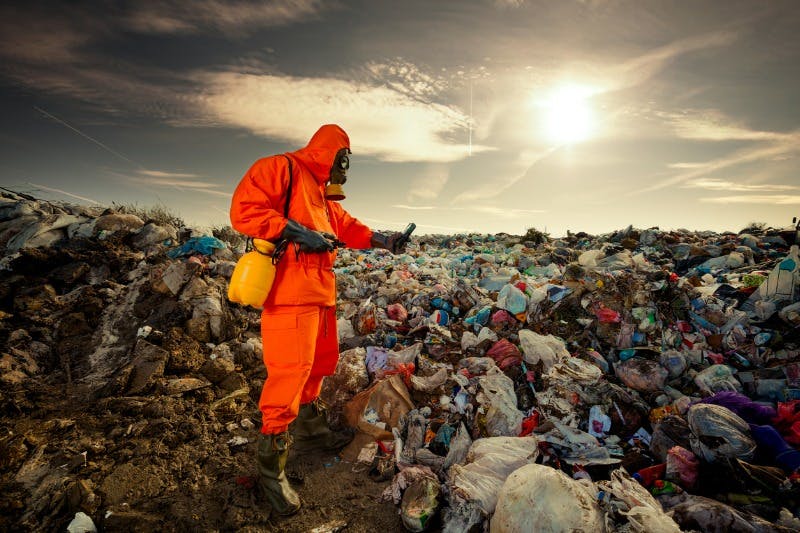Many industries generate hazardous waste, like oils, fuels, and chemicals, which must be disposed of properly. Batteries, hygiene products, and insecticides are all examples of everyday household objects classified as hazardous compounds. Statistics show that the European Union produced 100.7 million tons of hazardous waste in 2016. Failure to properly dispose of this trash safely and legally can result in significant consequences for human and environmental health. In addition, heavy penalties, fines, and even detention may result from this behaviour. As a result, it is essential to control a waste management program that dumps hazardous material effectively and complies with the Hazardous Waste Regulations 2005.
Because hazardous waste disposal has become relatively easy in recent years, there is no longer any motive for people or companies to pollute. In light of this, here is a comprehensive instruction on properly disposing of hazardous garbage. Waste is generally produced under the continuation of life and is directly associated with public activities like agriculture, manufacturing, social, institutional, governmental, commercial, mining, entertainment, and other activities. This problem is becoming increasingly severe and a potential source of conflict in society. Therefore, the primary focus of this research is on potentially dangerous materials.
What Is Hazardous Waste?
When it comes to hazardous trash, waste manufacturers cannot get rid of it in a dumpster or rubbish bin like other types of waste. Instead, it should go through the correct procedures to ensure that it will not harm people, animals, or the atmosphere when released. It is essential to understand that you might handle your hazardous waste only if you are properly qualified to do that and have the required on-site services offered to you. To distinguish between dangerous and conventional waste materials, you must first understand the distinction between the two.
Waste is often classified as hazardous if it (or the compounds contained within it) has the potential to cause harm to individuals or the environment. Toxic liquids, flammable goods, chemicals, and everyday items such as battery packs and paint products are prohibited. Chemical wastes created in industries, hospitals, and other types of home wastes are classified as hazardous because they may include dangerous compounds. The wastes may be acidic, explosive, toxic, or react with other compounds if they are exposed to them. Some hazardous wastes are hazardous to the environment, including people, animals, and ecosystems, and should be avoided at all costs.
Hazardous wastes are defined as those that display one or more characteristics: ignitability, flammability, reactivity, or lethality. As defined by the Resource Conservation and Recovery Act (RCRA), hazardous areas are considered as any waste or combo of wastes that pose a significant current or possible hazard to public health or living things since these wastes are not degradable or chronic or because they can be physiologically magnified, or because they can be fatal, or because they may, again and again, that cause or likely to experience other types of environmental damage.
Luckily, it is recyclable for a large number of hazardous items, which helps reduce waste that ends up in landfills. According to berecycled.org, dangerous materials such as lightbulbs and tubes, garden chemicals, glues and sealants, butane, cleaning agents, oil-based paints, batteries, propane, and car fluids can all be recycled. In addition, numerous recycling centers accept specific forms of hazardous garbage, so check with your local facility to determine what they take. Hazardous sources and services material is reused if it is employed or reused (for example, as a component in a procedure), recovered, or utilized in specified ways, including removal and power generation.
Reclaimed material has been treated to recover a usable product or rejuvenated. A component has been used or recycled if it is used as an element in an economic process that results in the production of a product (e.g., distilled bottom through one cycle are used as fodder in other methods) or if it is used as a good alternative for a consumer device.
A component has been used or recycled if it is used as an element in an economic process that results in the production of a product (e.g., distilled bottom through one process are used as fodder in other processes) or if it is used as a good alternative for a consumer device.
Restoration, reuse, and recycling of hazardous waste can help prevent environmental concerns, safeguard rare natural resources, minimize the nation's dependency on raw materials and energy, and give financial gains.
Recycling hazardous waste has several interconnected environmental advantages, including the following:
- Decreasing raw material consumption.
- Pollutant reduction.
- It lowers energy use.
- It minimizes trash that must be handled and disposed of.
Extracting, refining, transporting, and processing raw materials can have a substantial environmental impact. However, recycling hazardous waste can result in less air, water, and land contamination caused by these methods. Additionally, recycling can help reduce greenhouse gas emissions (GHGs).
Recycling hazardous wastes reduces the energy required to source raw materials and make products. When energy demand is reduced, fewer fuels are burnt, and fewer greenhouse gases (GHGs) are released into the environment, which can help mitigate the effects of climatic changes and reduce air pollution.
Finally, hazardous waste recycling results in less hazardous material being sent for processing and recycling. This results in a reduction in the demand for dangerous waste dumps and landfills, as well as a reduction in the energy consumed by those systems, resulting in less pollution.
Recycling Hazardous Waste in the United States
The EPA and states collect and publish statistics on recycling hazardous waste as part of the national Biennial Report, which contains information on the production, administration, and final disposal of hazardous wastes subject to RCRA regulation. Recycling cleared almost 1.5 million tons of dangerous trash in 2017. A more detailed analysis of this figure may be found in the RCRA Info Web Report Recyclers of Hazardous Waste. Additionally, the paper breaks down this data by state.
Safety Precautions for Hazardous Waste Recycling
Once you demonstrate that your trash is hazardous, you are legally utilized to keep and get rid of it safely and under applicable regulations. Before delivering dangerous material to a waste facility, you may need to keep it on your premises. Hazardous waste should be kept in suitable, leakage-proof, and sealed containers. Steel containers, for example, are frequently used to hold dangerous items in waste disposal plants. It would be best if you established a storage area for hazardous waste. It ought to be close to the source of garbage generation. It should not obstruct other activities. Additionally, you can include a backup container to catch any spillage or leakage from the primary container. Adding this additional layer of safety assures that your trash is secure and poses little risk to people or the environment.
People and corporations may find it difficult to dispose of hazardous trash safely and in an ecologically friendly manner. However, it is critical to remember that non-compliance could negatively impact human and environmental health. As a result, heavy fines are imposed on persons and businesses that violate regulations. By adopting a few easy processes, disposing of hazardous waste may be relatively straightforward and quick. Utilize the advice above to assist you in disposing of dangerous trash safely, professionally, and following all applicable legislation.



